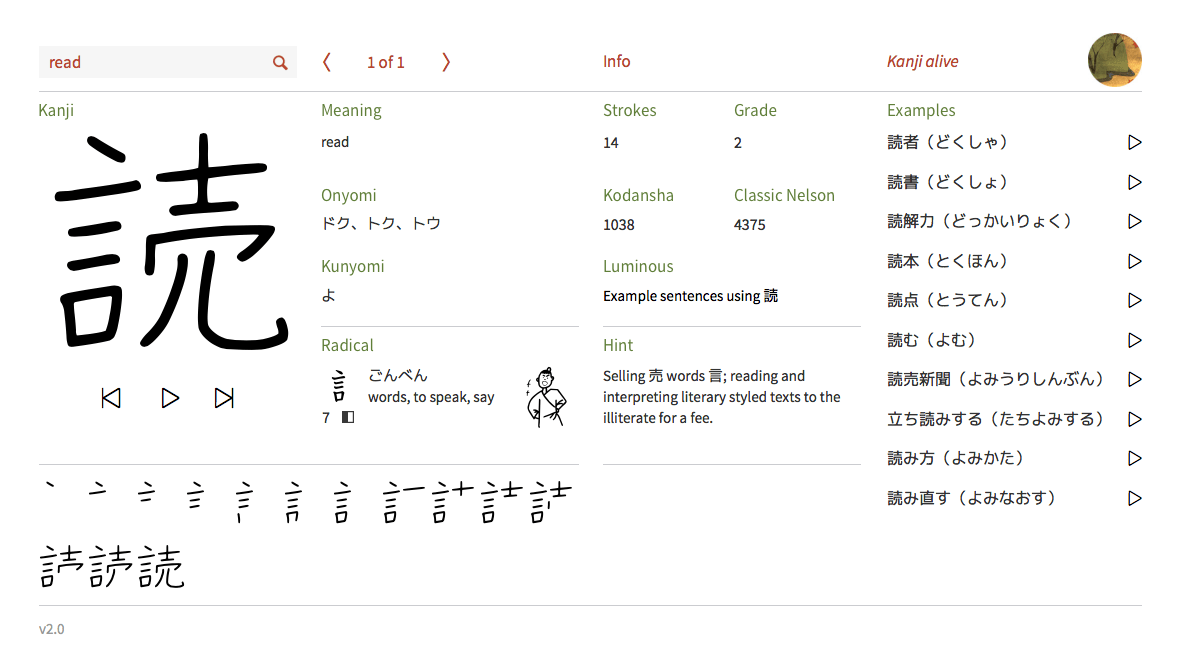Take a look at 海 again. When writing this kanji, you would start with the topmost dot on the left. Then the second dot down, then the final stroke in the radical. After that, move all the way back up to the top and make the little hat (two strokes, first the one on the left, then the horizontal one). How to Read and Write Japanese Fast – Writing Japanese Fast Memorize the hiragana script. Study the katakana script. Study the characters in a handwritten font. Use kanji, but only when you need to. Practice the proper stroke order. Practice writing sentences. Do not write in romaji. Write in Read and Write Hiragana, Katakana and Kanji. In Japanese, we use three scripts (also called “alphabets” or “syllabaries”). These scripts are Hiragana, Katakana and Kanji, all of which play an important part in learning Japanese. Kanji characters may seem foreign but if you look closely you may be able to associate more familiar images within a kanji character to help you remember it.
For example, the kanji character for “person” looks like a person. Similarly, the kanji character for “stop” looks like a person motioning with his arm to stop. Kanji that appear in a compound or 熟語 is usually read with 音読み while one Kanji by itself is usually read with 訓読み. For example, 「力」(ちから) is read with the 訓読み while the same character in a compound word such as 「能力」 is read with the 音読み (which is 「りょく」 in this case). To recap, every kanji has at least two pronunciations. The first one (the so-called訓読み kun’yomi or ‘meaning reading’) has an original Japanese pronunciation, and is used with one kanji on it’s own. The second one (called音読み on’yomi or ‘sound-based reading’) is used in compound words, These Japanese words were assigned to kanji with similar meanings, and became known as the’kun’ readings such that the kanji could be’read’ with either the original Chinese pronunciation, or the original Japanese word.
It is customary to write kun readings in hiragana, and’kun’ comes from Japanese is the same! You don’t need to know all the words, or all the kanji, in order to read and speak Japanese fluently. The government have made things easier by publishing a list of 2,136 kanji which they think are the most essential. These are called jouyou kanji.
